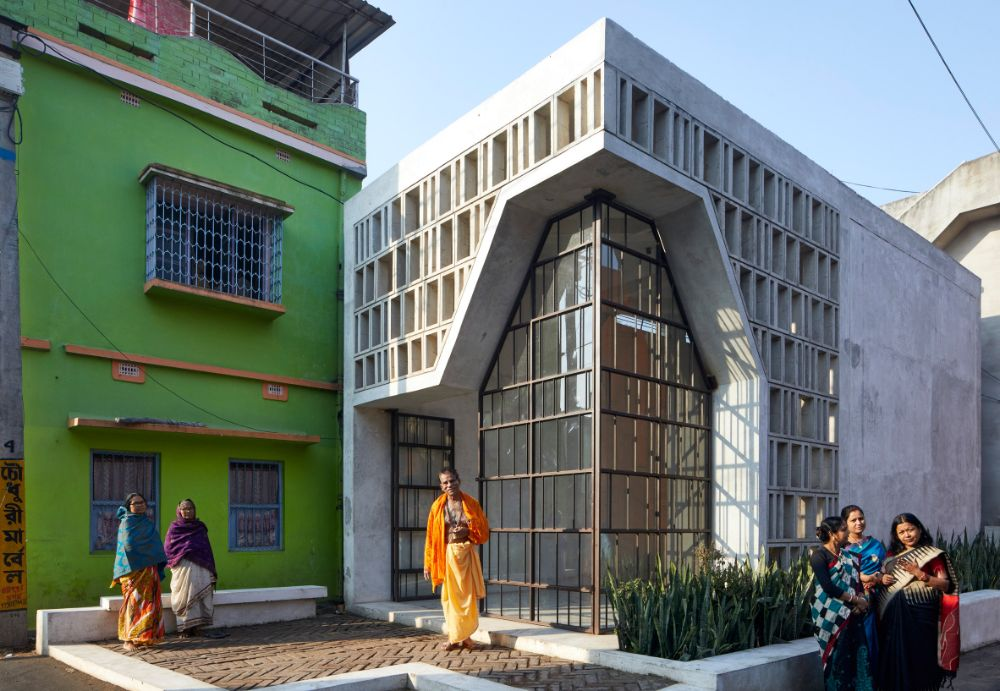In a nation where spirituality is deeply woven into daily life, devotional spaces—from diya-lit puja corners in homes to opulent temple complexes—hold immense cultural and emotional value. Now, micro-temple real estate is reimagining how these sacred spaces are created, maintained, and funded. Welcome to the rise of crowdfunded devotional plots—compact, permissioned spaces dedicated to personal or ancestral worship, which priests, families, and communities can collectively own and support.
1. What Is Micro‑Temple Real Estate?
Micro‑temples are compact devotional spaces—shrines, consecrated corners, or small temple pods—either standalone on community grounds or built within existing structures. Think 25–100 sq ft “plotlets” reserved for puja rituals, guided by priests and designed for focused devotion.
When funded via crowdfunding, multiple individuals purchase fractional ownership—either spiritual (participatory blessings, puja time slots) or financial (future resale at holy-town potential). This creates a shared devotional space, managed by a collective custodian or trust.

2. Why the Trend Is Gaining Traction
A. Spiritual Democratization
- Enables average families to maintain a sacred space even in space-restricted homes.
- Allows diaspora or remote devotees to own worship plots remotely—“my temple corner in Varanasi.”
B. Fractional Affordability
- Not everyone can buy land near a temple in Haridwar or Ayodhya. Micro-temple crowdfunding makes it accessible at ₹25,000–₹2 lakh.
C. Heritage & Digital Integration
- Like NFTs for heirlooms, these projects can integrate digital registers, periodic puja updates, and even mobile-based darshan streaming.
3. Is It Legal in India?
Real‑estate crowdfunding is legally permissible in India—but with caveats:
- Conducted under SEBI’s AIF (Category II) or via private placement. Platforms like Assetmonk, Strataprop, and PropertyShare have paved the way Bhoovaanijyak Blogs+6Legal Bites+6INFOFRIENDLY+6.
- Equity-based crowdfunding remains restricted; donations or fractional ownership models must comply with SEBI and Companies Act rules Wealthwise+1Reddit+1.
Thus, traction is building, but platforms must proceed via regulated AIFs or legal frameworks.
4. How It Works: Funding a Micro‑Temple Plot
1. Location Identification
Select a religiously significant area—a corridor near a temple, ghat, or ashram.
2. Plot Segmentation
Divide land into small plots (25–100 sq ft). Each plot is consecrated under a religious ceremony.
3. Crowdfunding Campaign
Open slots for devotees via platforms or trusts. Raise funds at prices ranging from ₹25 k (standard slots) to ₹2 lakh (prime spots).
4. Collective Governance
Establish a committee/trust to manage daily pujas, maintenance, and community decisions.
5. Devotee Services
Offer benefits like monthly pujas in one’s name, anniversary rituals, or digital darshan access.
6. Exit or Transfer
Plots can be transferred or redeemed at discretion, often tied to temple expansion or resale demand.
5. Real‑World Precedents & Pilots
- AppsForBharat / Sri Mandir raised ₹175 crore with digital temple offerings and home puja bookings—getting over 12 lakh devotees in a year Times of India.
- Devotion meets digitization—this is happening at scale.
While micro-temple plots are still niche, models show strong potential for adoption in townships and temple-linked real estate.
6. Why It Matters—Beyond Devotion
A. Cultural Preservation
Micro-temples reaffirm local rituals and practices within urbanizing communities—anchoring memories and heritage.
B. Community Building
Shared worship spaces foster collective rituals—Diwali satsangs, monthly aarti, or festival celebrations.
C. Real Estate Value
Plots near sacred corridors in Ayodhya or Varanasi appreciate swiftly—projected 20–30% annual increment impactguru.com+11hindustantimes.com+11micromitti.com+11.
D. Enhanced Accessibility
With digital updates, devotees across India can participate spiritually, bridging geographic gaps.
7. Implementation Blueprint
| Stage | Key Actions |
|---|---|
| 1. Ideation | Secure land, assess demand among devotees |
| 2. Legal Setup | Form trust/AIF structure, SEBI compliance |
| 3. Crowdfunding | Define plot tiers (₹25k–₹2L), launch campaign |
| 4. Construction | Consecrate plot, build temple pods (eco-friendly materials) |
| 5. Digital Overlay | Provide QR code, registration, darshan livestream |
| 6. Operations | Daily rituals via priests, maintenance fund, event calendar |
| 7. Resale Protocol | Trust decides resale prices or internal transfer policies |
8. Challenges & Risk Mitigation
- Regulatory – Ensure SEBI compliance via AIF/private trust structure.
- Fraud – Enforce transparency through public registers and third-party audits.
- Liquidity – Offer structured transfer windows or resale plans.
- Cultural Sensitivity – Engage local priests and community leaders.
- Governance – Maintain audit trails, trustee boards, and user updates.
9. Demand Outlook in 2026
- Economic mobility + spiritual affinity = rising tier‑2/3 town participation.
- Pilgrimage circuits (Rishikesh, Haridwar, Ayodhya, Varanasi) fuel demand for fractional temple ownership RedditReddit+7Jugyah+7INFOFRIENDLY+7Reddit+2Reddit+2Legal Bites+2hindustantimes.com+1Reddit+1INFOFRIENDLY.
- Diaspora interest—NRIs seeking spiritual plots remotely.
- Integration possibilities: solar micro‑temples, community wellness hubs, VR yatra packages.
10. Future Innovations
- Tokenized micro-temple NFTs verifying devotional rights.
- TempleTown co-working zones offering shared rituals + coworking.
- Smart micro-temple pods with LED diya modules, fragrance diffusers, and prayer reminders.
- Spiritual REITs: Aggregated ownership of micro-temple portfolios across holy cities.
11. Takeaway
Micro-temple real estate crowdfunding is more than a niche concept—it’s a democratization of devotion. It merges community, tradition, investment, and spirituality into compact plots that enrich both individuals and urban landscapes.
With thoughtful legal frameworks, transparent governance, and rooted cultural ethos, India is on the cusp of a devotional real estate revolution.
📣 Considering a Micro‑Temple Plot in or near Panipat?
I can connect you with local religious councils, plot leasing options, crowdfunding partners, and trust advisors to help you establish your own fractional devotional space. Just let me know!
